
Quince Paste or Membrillo is a firm preserve made from quinces, a variety native to Asia Minor. Small and irregular in shape, this fruit is characterized by a rough, intense yellow skin and a hard, compact pulp that is very fragrant. The flavor, however, is rather sour and bitterish: for this reason, it is usually not eaten raw, but cooked or transformed into jams.
The preparation is simple and does not require any particular skills, but only a little patience: you just need to boil the quinces, peel them, remove the core and blend them to obtain a puree to cook over low heat for about half an hour, with brown sugar, a teaspoon of cinnamon and a clove. Once the mixture is ready, all you have to do is pour it into a square mold, lined with baking paper, wait at least 24 hours for it to solidify and, finally, cut it into cubes.
Quince Paste is ideal to enjoy as a delicious snack or a happy ending to a meal, which will remind your guests of the flavors of the past. If you wish, you can also serve it as an appetizer or brunch food that is different from the usual, experimenting with more sophisticated combinations with mature and savory cheeses, such as pecorino, or you can use it to enrich fresh seasonal salads.
What is Quince Paste (Membrillo)?
Quince paste, known as cotognata in Italian and membrillo in Spanish, is a sweet, dense preserve made from quince, a fragrant, pear-like fruit that becomes rich and flavorful when cooked. Originating centuries ago in the Mediterranean, quince paste has been a staple in both Spanish and Italian culinary traditions, valued for its long shelf life and unique taste. The process involves slowly cooking quince with sugar until it thickens into a jelly-like consistency, which can then be sliced. Traditionally, it’s poured into molds to set, resulting in beautifully shaped, jewel-toned blocks. Quince paste is often enjoyed as an accompaniment to cheese, particularly sharp or aged varieties, creating a delightful contrast of sweet and savory. It’s also popular in desserts, on toast, or even on its own as a sweet treat, reflecting its versatility across different cuisines and eras.
Pro Tips for the Best Quince Paste
- Look for fragrant, yellow quinces for the best flavor and natural sweetness.
- Remove all seeds and tough cores to avoid bitterness and ensure a smooth paste.
- Simmer the quince mixture over low heat, stirring frequently to prevent sticking and to develop a deep, caramelized flavor.
- The paste is ready when it thickens and starts to pull away from the sides of the pan.
- Pour the hot paste into molds or a lined dish for a professional look and easy slicing once cooled.
- Allow the paste to set in a cool, dry place to achieve a firm, sliceable consistency.
What Can I Do With Quince Paste?
Quince paste is versatile and pairs wonderfully with cheese, especially sharp or aged varieties like Manchego or cheddar. It can also be used in desserts, spread on toast, served with meats for a sweet-savory contrast, or enjoyed as a sweet treat on its own.
Can I Make Quince Paste Ahead of Time?
Yes, quince paste can be made in advance! It actually improves over time, as the flavors deepen. Once set, it can be stored in an airtight container in the fridge for several months, making it a perfect make-ahead treat for pairing with cheese or adding to desserts.
Can I Freeze Quince Paste?
Yes, quince paste can be frozen. Wrap it tightly in plastic wrap and place it in an airtight container or freezer bag. It can be frozen for up to a year. Thaw in the fridge before serving, and it will retain its flavor and texture perfectly.
How to Store Quince Paste (Membrillo)
Quince paste can be stored in the refrigerator, tightly closed in an airtight container, for a maximum of 3 weeks.
Ingredients
How to Make Quince Paste (Membrillo)
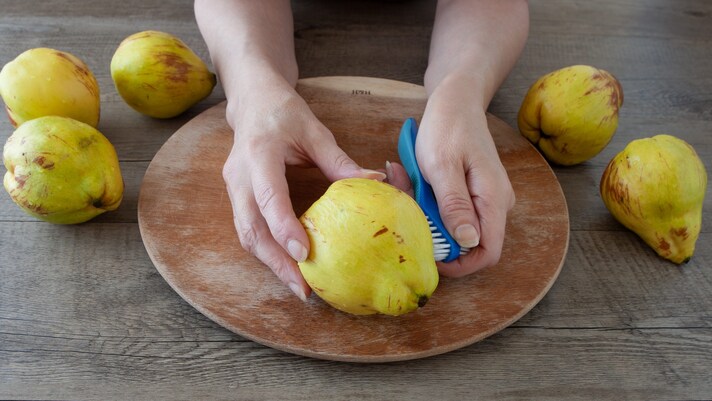
Clean the quinces with a brush, to remove the fluff that covers the peel.
Clean the quinces with a brush, to remove the fluff that covers the peel.
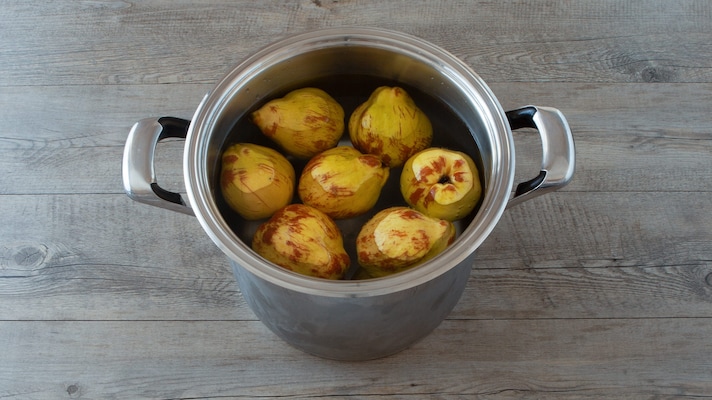
Rinse the apples and boil them in a large pot with plenty of water, until they are soft when pierced with a fork; it will take about 1 hour.
Rinse the apples and boil them in a large pot with plenty of water, until they are soft when pierced with a fork; it will take about 1 hour.

Drain them from the water and let them cool, then remove the core and peel, and cut them into pieces.
Drain them from the water and let them cool, then remove the core and peel, and cut them into pieces.
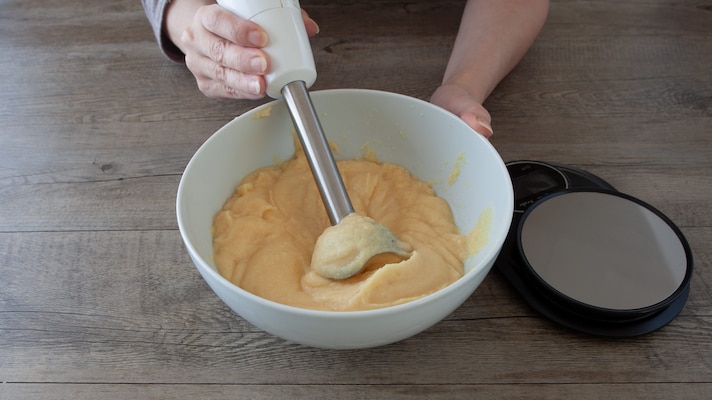
Place the bowl on a kitchen scale and note the weight; pour the chopped quinces inside and puree them with the immersion blender.
Place the bowl on a kitchen scale and note the weight; pour the chopped quinces inside and puree them with the immersion blender.
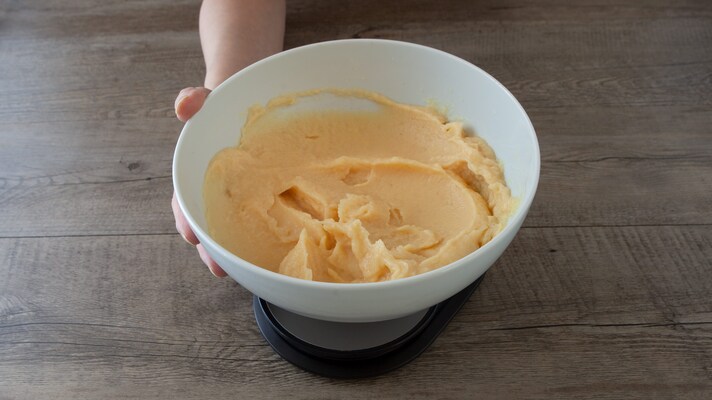
Place the bowl with the apple puree back on the scale and calculate the weight of the puree: you will need it to evaluate the amount of sugar, which must be the same. In our case we obtained 700 grams of quince puree, so we used the same amount of brown sugar.
Place the bowl with the apple puree back on the scale and calculate the weight of the puree: you will need it to evaluate the amount of sugar, which must be the same. In our case we obtained 700 grams of quince puree, so we used the same amount of brown sugar.
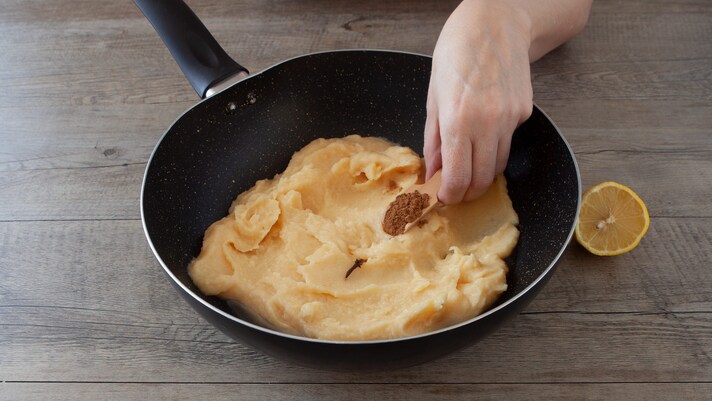
Transfer the apple puree into a non-stick pan, large and with fairly high edges, add the juice of half a lemon, a clove and a teaspoon of cinnamon.
Transfer the apple puree into a non-stick pan, large and with fairly high edges, add the juice of half a lemon, a clove and a teaspoon of cinnamon.
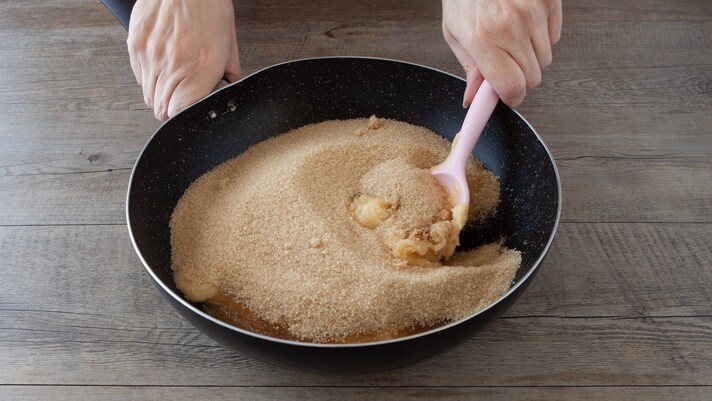
Also add the brown sugar.
Also add the brown sugar.
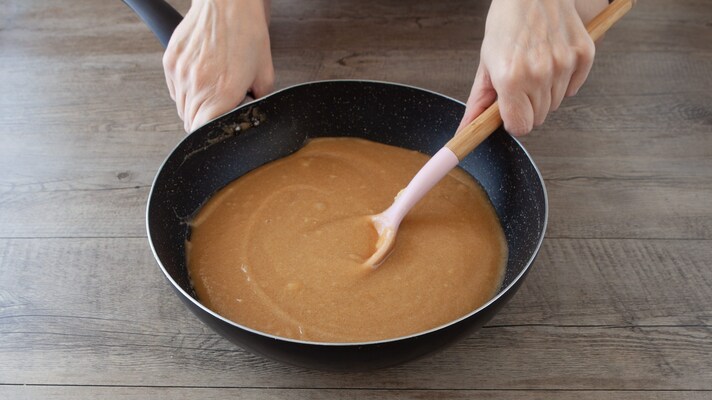
Mix all the ingredients well and cook over low heat, stirring constantly; the quince paste should simmer without sticking to the bottom or burning.
Mix all the ingredients well and cook over low heat, stirring constantly; the quince paste should simmer without sticking to the bottom or burning.
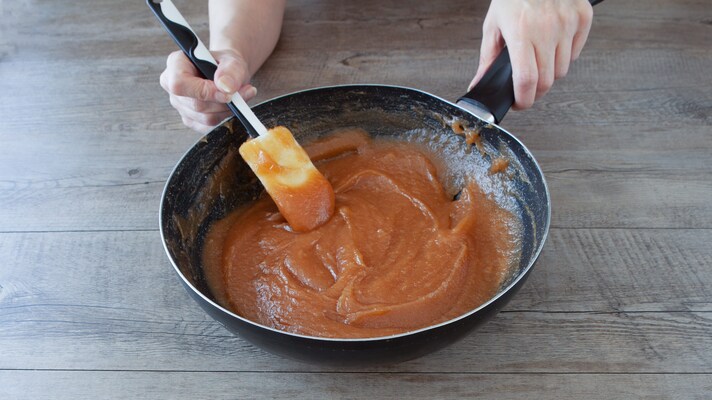
Cook the quince paste for about 30 minutes, until it is thick and compact and does not slip off the spatula.
Cook the quince paste for about 30 minutes, until it is thick and compact and does not slip off the spatula.
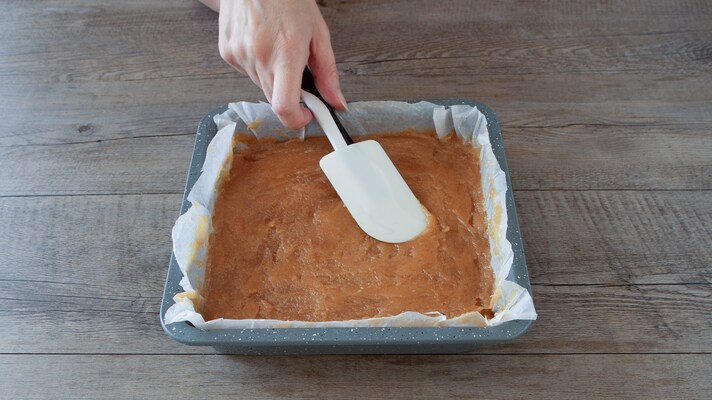
Transfer the mixture into a 9 inches square mould lined with baking paper and level with a spatula to ensure an even thickness. Leave the quince paste to rest for 24 hours, at room temperature, covered with a clean cloth.
Transfer the mixture into a 9 inches square mould lined with baking paper and level with a spatula to ensure an even thickness. Leave the quince paste to rest for 24 hours, at room temperature, covered with a clean cloth.
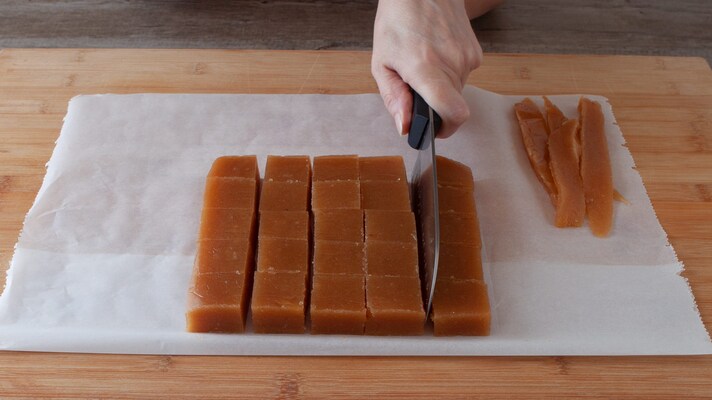
Once the necessary time has passed, the quince paste will be firm and compact: turn the mould upside down onto a sheet of baking paper, level the edges and cut it into cubes of about 2 centimeters on each side.
Once the necessary time has passed, the quince paste will be firm and compact: turn the mould upside down onto a sheet of baking paper, level the edges and cut it into cubes of about 2 centimeters on each side.
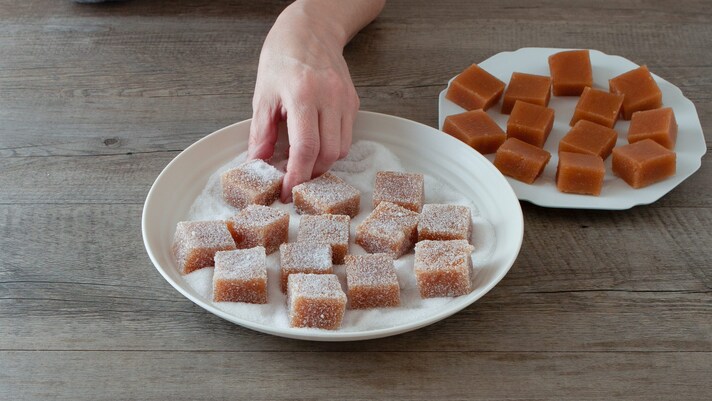
Pass each cube in granulated sugar and gather them on a tray or a serving plate.
Pass each cube in granulated sugar and gather them on a tray or a serving plate.
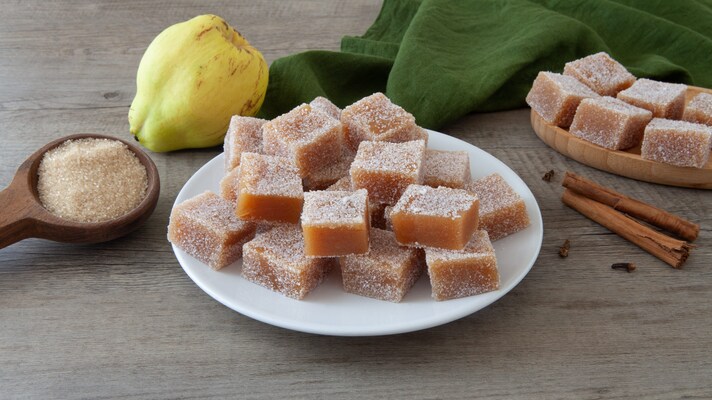
Enjoy!
Enjoy!
;Resize,width=767;)
